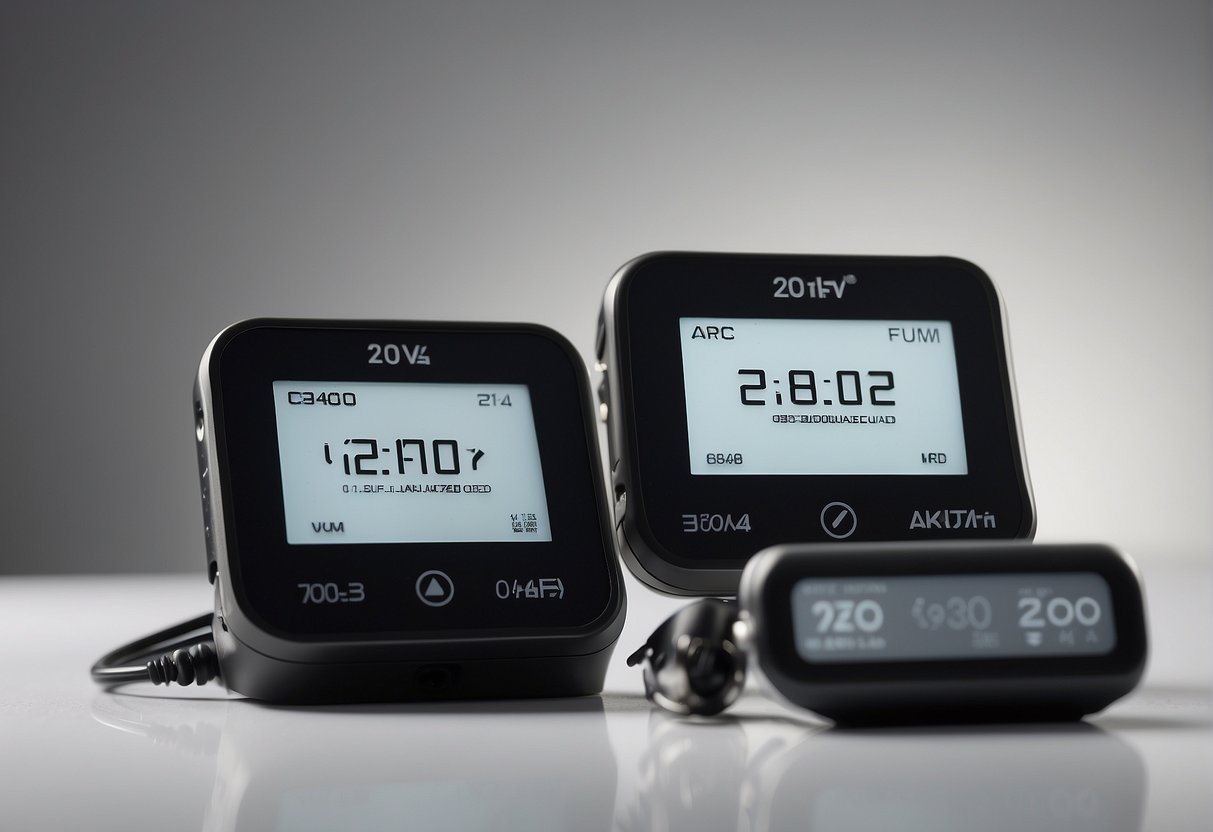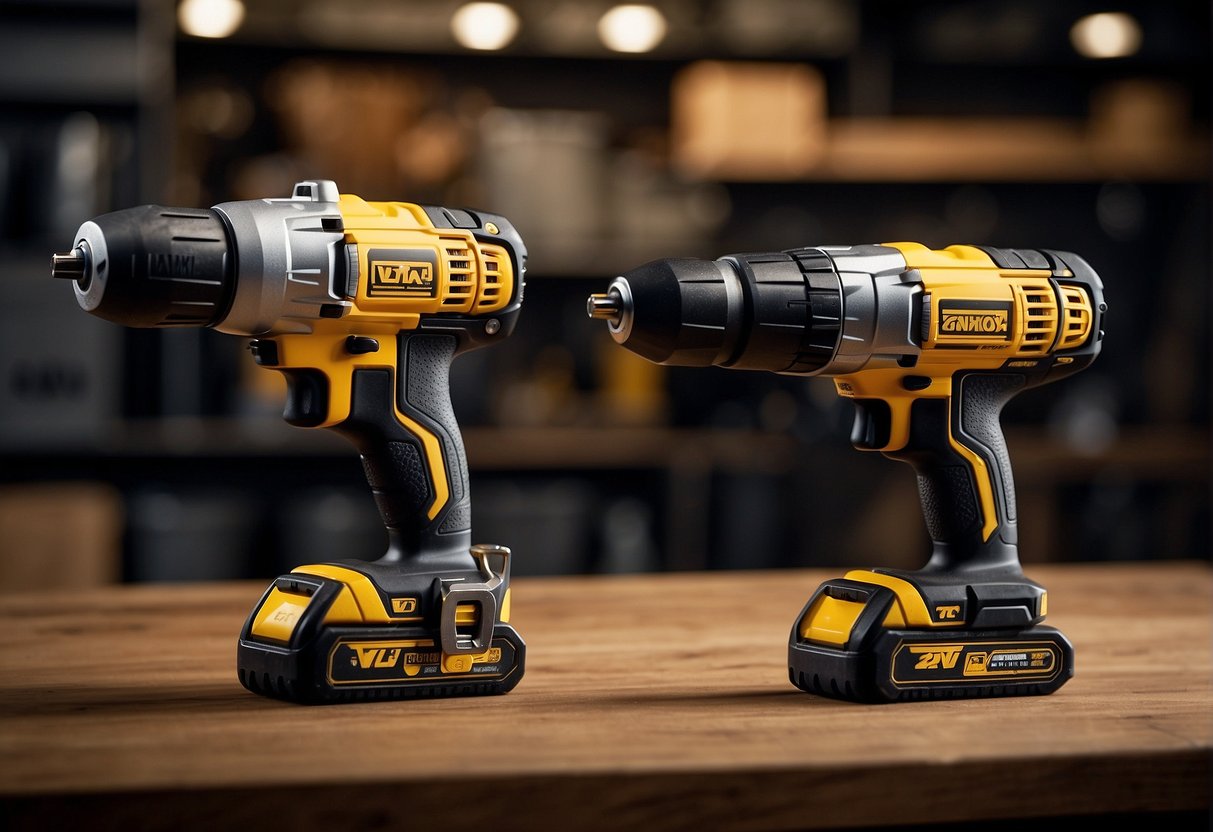When it comes to power tools, voltage is a crucial factor to consider. Choosing between a 20v and 40v power tool can be a daunting task, especially when you are not sure about the differences between them. In this article, I will explore the differences between 20v and 40v power tools, their applications, and which one is the best fit for your needs.

Understanding voltage in power tools is essential to make an informed decision. Voltage refers to the amount of electrical power that a battery can deliver to a tool. The higher the voltage, the more power the tool has, which translates to better performance and efficiency. However, higher voltage also means a higher price tag, and it may not always be necessary for your needs. So, when choosing between a 20v and 40v power tool, you need to consider your application, budget, and the features that matter the most to you.
Key Takeaways
- Voltage is a crucial factor to consider when choosing power tools
- Higher voltage means more power and better performance, but also a higher price tag
- The choice between 20v and 40v power tools depends on your application, budget, and the features that matter the most to you.
Understanding Voltage in Power Tools

As a DIY enthusiast, I understand the importance of having the right tools for the job. One of the key considerations when choosing power tools is the voltage. In this section, I will explain the basics of voltage in power tools and the differences between 20v and 40v systems.
Voltage Basics
Voltage is the measure of electric potential energy per unit charge. In power tools, voltage is the amount of electrical energy that the battery can deliver to the electric motor. The higher the voltage, the more power output the tool can provide.
20v Systems
20v systems are the most common power tool voltage available in the market. These systems use Lithium-ion batteries and are suitable for most DIY tasks such as drilling, driving screws, and light cutting. The 20v systems are lightweight and easy to handle, making them ideal for extended use.
40v Systems
40v systems are the high-end power tool voltage available in the market. These systems use advanced battery technology and powerful electric motors to provide high power output. 40v systems are suitable for heavy-duty tasks such as cutting thick branches, trimming hedges, and mowing lawns. These systems are heavier and bulkier than 20v systems, making them less portable.
In conclusion, choosing the right voltage for your power tools depends on the type of task you will be performing. 20v systems are suitable for most DIY tasks, while 40v systems are ideal for heavy-duty tasks. When choosing a power tool system, it is essential to consider the power output, battery technology, and electric motor.
Comparing 20v and 40v Power Tools
As a DIY enthusiast or professional, choosing the right power tool can make a world of difference in the outcome of your project. One important aspect to consider is the power source, specifically the voltage of the battery. In this section, I will compare 20v and 40v power tools, highlighting their differences and similarities.
Power and Performance
When it comes to power and performance, the voltage of the battery is a crucial factor. Higher voltage batteries generally offer more power and better performance. A 40v trimmer, for example, is likely to have more torque and cutting power than a 20v trimmer. However, this does not mean that a 20v trimmer is not powerful enough for your needs. It ultimately depends on the type of project and the materials you are working with.
Battery Life and Efficiency
Another important consideration is battery life and efficiency. A 40v battery typically has a larger capacity than a 20v battery, meaning it can store more energy and last longer between charges. However, this does not necessarily mean that a 40v battery is more efficient than a 20v battery. Efficiency depends on the design and technology of the battery, as well as the power consumption of the tool.
Size and Weight Considerations
Size and weight are also important factors to consider when choosing between a 20v and 40v power tool. A 40v tool is likely to be larger and heavier than a 20v tool, which can make it more difficult to maneuver and handle for extended periods. However, a 40v tool may also be more durable and able to handle tougher projects.
In conclusion, when choosing between a 20v and 40v power tool, it is important to consider your specific needs and the type of project you will be working on. While a 40v tool may offer more power and longer battery life, a 20v tool may be more compact and easier to handle. Ultimately, the decision comes down to personal preference and the requirements of the project at hand.
Applications and Suitability

When it comes to choosing between a 20V and 40V battery-powered tool, it is important to consider your specific needs and applications. While both voltages offer their own unique benefits, they are not interchangeable and have different applications.
Light-Duty Applications
For light-duty applications such as trimming and pruning small branches, a 20V battery-powered tool is suitable. These tools are lightweight, easy to maneuver, and perfect for small to medium-sized gardens. They are also ideal for those who require a tool that is easy to handle and operate for extended periods of time.
Heavy-Duty Tasks
If you have thicker branches or larger areas to cover, a 40V battery-powered tool is the better option. These tools are designed for heavy-duty tasks and can handle larger gardens with ease. They are also more powerful and can cut through thicker branches with ease.
When choosing between a 20V and 40V battery-powered tool, it is important to consider the specific needs of your garden. If you have a small garden with light-duty applications, a 20V tool is suitable. However, if you have a larger garden with heavy-duty tasks, a 40V tool is the better option.
In conclusion, both 20V and 40V battery-powered tools have their own unique benefits and applications. By understanding your specific needs and applications, you can choose the right tool for your garden.
Cost and Value Analysis
Initial Purchase Price
When it comes to the initial purchase price, 20V tools are generally less expensive than their 40V counterparts. For example, a 20V chainsaw may cost around $150, while a 40V chainsaw may cost around $250. However, it is important to note that the price difference varies depending on the tool and the brand.
Long-Term Investment
While 20V tools may have a lower initial purchase price, they may not be the better long-term investment. 40V tools tend to have a longer battery life, which means they may require fewer battery pack replacements over time. Additionally, 40V tools often come with better battery chargers, which can reduce charging time and increase battery life.
Another factor to consider is the warranty. Some brands offer longer warranties for their 40V tools, which can provide added value and peace of mind for the consumer.
Ultimately, the decision between 20V and 40V tools depends on the individual’s budget and needs. While 20V tools may be more affordable upfront, 40V tools may provide better value in the long run due to their longer battery life and better charging capabilities.
Key Features and Technologies

When it comes to choosing between a 20V and a 40V tool, there are some key features and technologies to consider. In this section, I will discuss some of the most important ones.
Battery and Motor Technologies
One of the most significant differences between a 20V and a 40V tool is the battery and motor technology. The 40V tools typically use a lithium-ion battery and a brushless motor. The lithium-ion battery provides longer run time and faster charging, while the brushless motor delivers more power and longer life.
On the other hand, the 20V tools usually have a less powerful motor and use a less advanced battery technology than the 40V tools. However, they are generally more affordable and suitable for lighter tasks.
Safety and Control Features
Another important consideration when choosing between a 20V and a 40V tool is the safety and control features. Both types of tools usually have a variable speed trigger, which allows you to adjust the speed of the tool according to your needs.
However, the 40V tools usually have more advanced safety and control features, such as overload protection and automatic shut-off. These features help to ensure that the tool does not overheat or cause any accidents.
When using any power tool, it is essential to follow all safety precautions. Always wear appropriate protective gear, such as safety glasses and gloves, and follow the manufacturer’s instructions carefully.
In summary, the choice between a 20V and a 40V tool depends on your needs and budget. While the 40V tools offer more advanced technology and safety features, the 20V tools are generally more affordable and suitable for lighter tasks.
Frequently Asked Questions
What are the performance differences between 20V and 40V power tools?
The performance differences between 20V and 40V power tools are mainly related to power and runtime. 40V power tools are generally more powerful and have a longer runtime than 20V power tools. However, 20V power tools are usually lighter and more compact, making them easier to handle and maneuver.
Can I interchange 20V and 40V batteries in tools designed for these voltages?
No, you cannot interchange 20V and 40V batteries in tools designed for these voltages. The voltage of the battery must match the voltage of the tool. Using a battery with a different voltage can damage the tool and the battery, and may be unsafe.
How does battery voltage affect the runtime and power of lawn equipment?
Battery voltage affects the runtime and power of lawn equipment in the following ways: higher voltage batteries provide more power, which enables the equipment to cut through thicker and tougher materials. Additionally, higher voltage batteries have a longer runtime than lower voltage batteries, allowing you to work for longer periods without having to recharge the battery.
What should I consider when choosing between a 20V and a 40V chainsaw?
When choosing between a 20V and a 40V chainsaw, you should consider the type of work you will be doing. If you will be cutting through thick branches and logs, a 40V chainsaw may be the better choice as it has more power and a longer runtime. However, if you will be doing lighter work, a 20V chainsaw may be sufficient and more comfortable to handle.
Are there compatibility issues when using different voltage batteries with the same brand, such as Black and Decker?
Yes, there may be compatibility issues when using different voltage batteries with the same brand. It is important to check the manufacturer’s specifications to ensure that the battery is compatible with the tool. Using an incompatible battery can damage the tool and the battery, and may be unsafe.
What are the safety implications of using a higher voltage battery in a lower voltage tool?
Using a higher voltage battery in a lower voltage tool can be unsafe as it can damage the tool and the battery. Additionally, it can cause the tool to overheat, which can be a fire hazard. It is important to use the correct voltage battery for the tool to ensure safe and proper operation.

Hi, I’m Sal Muller of Tooltrip.com. My DIY experience led me to understand essential power tools for home projects. Tooltrip.com guides enthusiasts and professionals in choosing right tools for any job. I provide concise top tool reviews for easier, efficient DIY.

